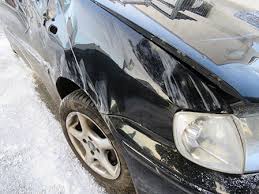Mastering Car Damage Assessment: A Comprehensive Guide for Vehicle Owners
Car damage assessment is a crucial aspect of vehicle ownership kfz gutachter düsseldorf, especially in the event of accidents or collisions. Understanding how to assess car damage correctly can save you time, money, and ensure your safety on the road. In this comprehensive guide, we’ll delve into the intricacies of car damage assessment, covering everything from common types of damage to the steps you should take to assess it accurately.
Types of Car Damage:
- Exterior Damage:
- Dents and Dings: Often caused by minor collisions or hailstorms, dents and dings can vary in severity.
- Scratches and Scrapes: Surface-level damage that can occur from various sources, including bushes, debris, or minor accidents.
- Cracked or Shattered Glass: Damage to windows, windshield, or mirrors, typically caused by collisions or vandalism.
- Structural Damage:
- Frame Damage: Serious structural issues resulting from high-impact collisions, which can affect the vehicle’s stability and safety.
- Chassis Damage: Damage to the undercarriage or framework of the vehicle, usually incurred in severe accidents.
- Mechanical Damage:
- Engine Damage: Issues such as coolant leaks, overheating, or damage to internal components due to accidents or poor maintenance.
- Suspension Damage: Damage to suspension components like shocks, struts, or control arms, impacting the vehicle’s handling and ride quality.
- Transmission Damage: Problems with shifting gears, unusual noises, or leaks, often caused by accidents or wear and tear.
Assessment Process:
- Initial Inspection:
- Assess the scene for safety and potential hazards.
- Check for injuries and seek medical attention if necessary.
- Document the accident scene, including photographs of the vehicles involved and any visible damage.
- Exterior Inspection:
- Examine the body of the vehicle for dents, scratches, and other visible damage.
- Check the alignment of panels and doors for any signs of misalignment.
- Inspect the glass for cracks or shattered areas.
- Structural Inspection:
- Look for signs of frame or chassis damage, such as visible bending or crumpling.
- Check the alignment of the vehicle using measurements or visual inspection.
- Pay attention to any unusual noises or vibrations while driving, indicating potential structural issues.
- Mechanical Inspection:
- Test drive the vehicle to assess its performance, including acceleration, braking, and handling.
- Listen for any abnormal sounds coming from the engine, transmission, or suspension.
- Inspect under the hood for signs of leaks or damage to mechanical components.
Conclusion: Mastering the art of car damage assessment is essential for every vehicle owner. By understanding the different types of damage and following a systematic assessment process, you can effectively evaluate the extent of damage to your vehicle and take appropriate action. Whether it’s minor scratches or major structural issues, being proactive in assessing car damage can help you make informed decisions and ensure the safety and longevity of your vehicle.

